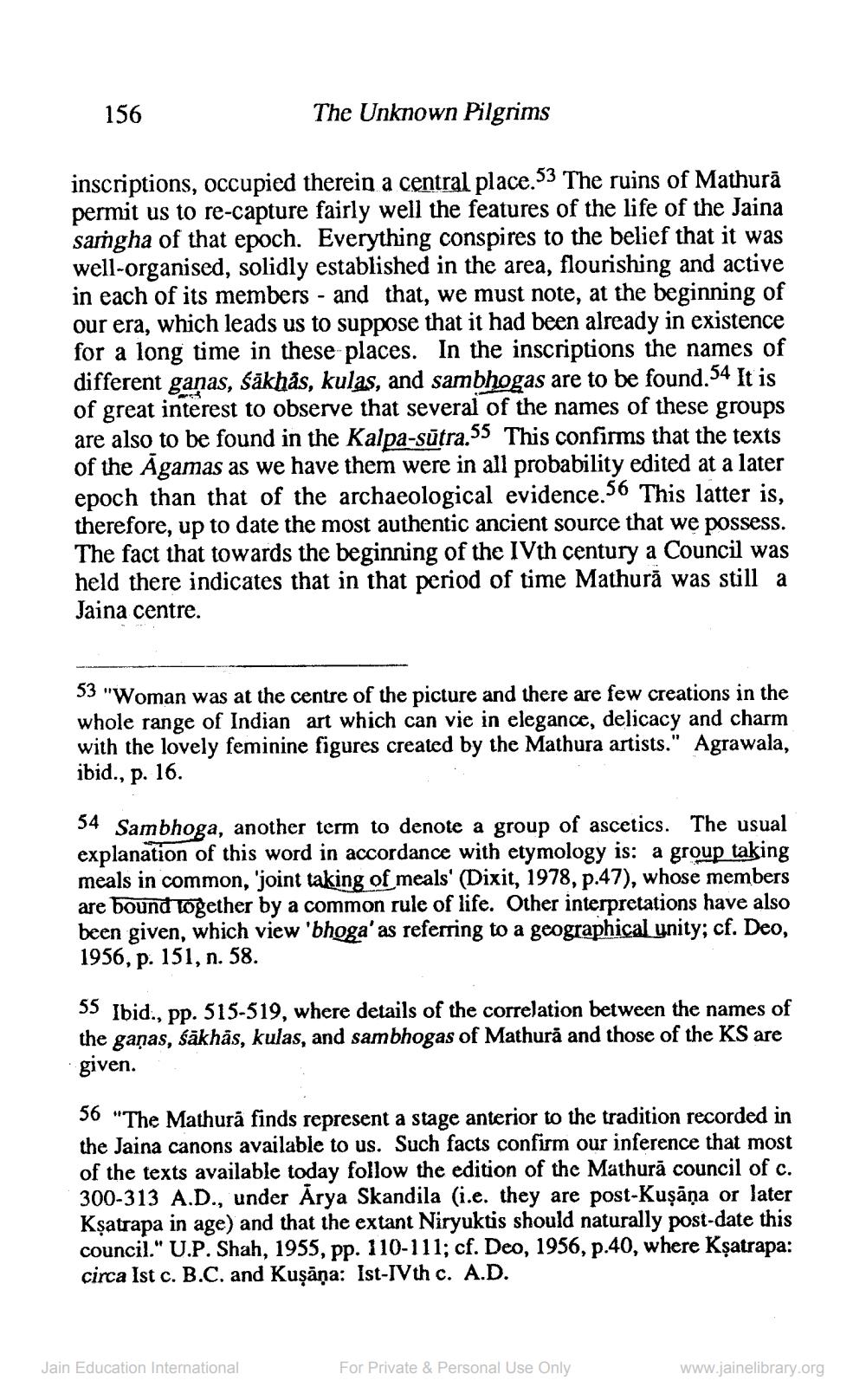________________
156
The Unknown Pilgrims
inscriptions, occupied therein a central place.53 The ruins of Mathurā permit us to re-capture fairly well the features of the life of the Jaina sargha of that epoch. Everything conspires to the belief that it was well-organised, solidly established in the area, flourishing and active in each of its members - and that, we must note, at the beginning of our era, which leads us to suppose that it had been already in existence for a long time in these places. In the inscriptions the names of different ganas, sākhås, kulas, and sambhogas are to be found.54 It is
at interest to observe that several of the names of these groups are also to be found in the Kalpa-sutra.55 This confirms that the texts of the Agamas as we have them were in all probability edited at a later epoch than that of the archaeological evidence.56 This latter is, therefore, up to date the most authentic ancient source that we possess. The fact that towards the beginning of the IVth century a Council was held there indicates that in that period of time Mathurā was still a Jaina centre.
ot
33 "Woman was at the centre of the picture and there are few creations in the whole range of Indian art which can vie in elegance, delicacy and charm with the lovely feminine figures created by the Mathura artists." Agrawala, ibid., p. 16.
54 Sambhoga, another term to denote a group of ascetics. The usual explanation of this word in accordance with etymology is: a group taking meals in common, 'joint taking of meals' (Dixit, 1978, p.47), whose members are bound together by a common rule of life. Other interpretations have also been given, which view 'bhoga' as referring to a geographical unity; cf. Deo, 1956, p. 151, n. 58.
55 Ibid., pp. 515-519, where details of the correlation between the names of the gaņas, sākhas, kulas, and sambhogas of Mathura and those of the KS are given.
56 "The Mathurā finds represent a stage anterior to the tradition recorded in the Jaina canons available to us. Such facts confirm our inference that most of the texts available today follow the edition of the Mathurā council of c. 300-313 A.D., Under Arya Skandila (i.e. they are post-Kuşāņa or later Kșatrapa in age) and that the extant Niryuktis should naturally post-date this council." U.P. Shah, 1955, pp. 110-111; cf. Deo, 1956, p.40, where Kşatrapa: circa Ist c. B.C. and Kusana: Ist-IV th c. A.D.
Jain Education International
For Private & Personal Use Only
www.jainelibrary.org




